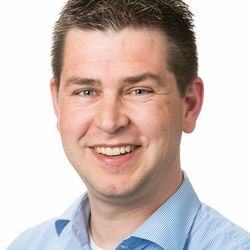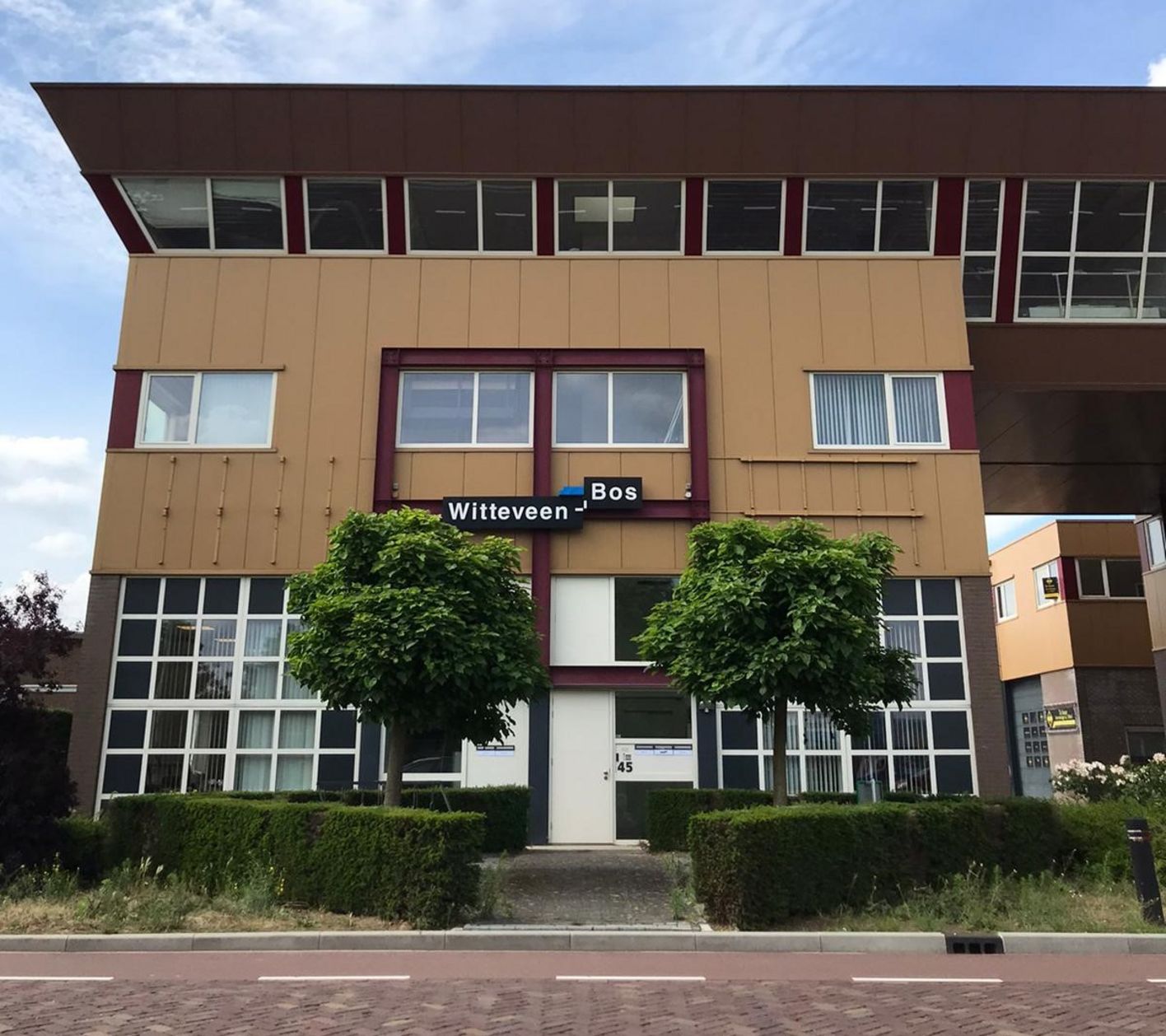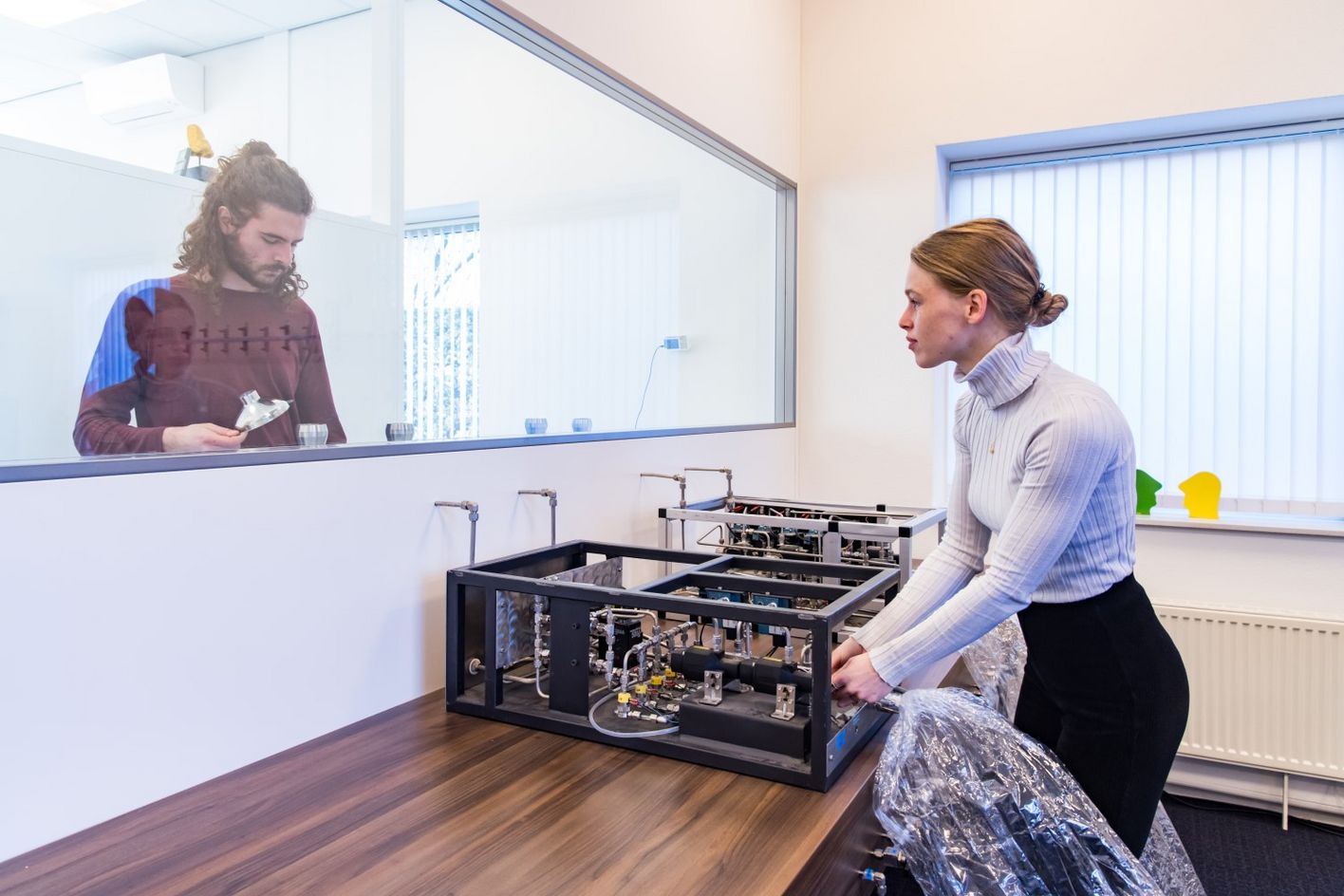Published on 18 November 2022
Odour Lab Witteveen+Bos: a rich history with favourable future prospects
Increasing pressure on available public space due to industrialisation, housing, agriculture and infrastructure means that there is a greater likelihood of inconvenience. This applies not only to levels of noise, but also to unpleasant odours. This is why the Witteveen+Bos Odour Lab sees scope for future growth. ‘We have always had a well-stocked portfolio of clients, so continuing to build on this is not an issue. Being able to fill the number of vacancies, however, remains a challenge.’
Jeroen Melcherts, head of the Witteveen+Bos Odour Lab, provides insight into the work the lab does. Our company has been active in the field of odour research and emission measurements for decades. These activities developed as part of our work for water authorities at the end of the 1970s, when unpleasant odours became a focus area in the design and construction of sewage treatment plants.
‘Today, we are serving a wide variety of sectors, including waste processing, food production, breweries, composting companies, the chemical industry and agriculture,’ explains Jeroen. ‘We work for both the public and private sectors. The focus is on industry, involving relatively small-scale projects by W+B standards, often with only modest budgets. Our contacts regularly generate new business for our colleagues. So this is another way in which we contribute to the growth of Witteveen+Bos.’
Move to the Hanzeweg
The Odour Lab, one of the three odour labs in the Netherlands and initially located on Van Twickelostraat in Deventer, moved to Hanzeweg 45 in Deventer at the beginning of 2020. Jeroen and his colleagues feel perfectly at home on this industrial estate.
‘Our new home base is easily accessible and we can make more efficient use of the available space at this location. Take our testing vehicle, for example, which we use to carry out measurements throughout the country. We can now park this close to our warehouse, so that loading and unloading is a piece of cake.
In the new building, which was available as an empty shell, Jeroen and his colleagues were able arrange everything optimally to meet their specific needs. The central area in the Odour Lab is occupied by the panel room and the control room, where two olfactometers are set up and operated by an analyst.
‘Our lab analyses the odour concentration of the air in the odour bags. This is done by diluting the sampled air via the olfactometers (a dilution device) and presenting it to an odour panel. My colleague Sjoerd Veenstra was closely involved in the design and construction of our first olfactometer in the early 1990s. It is important to note that the quality of our work is well assured: all our measurement and analysis activities are accredited by the Dutch Accreditation Council (RvA).’
Nosing around
Anyone nosing around the analysed odour bags hanging neatly on the ‘washing line’ will realise that the Odour Lab samples and analyses a wide range of odours. There is a clear smell of manure emanating from the Teflon tube attached to one of the 60-litre bags. Several smells, like compound feed and compost, are familiar, but there are many odours that cannot be identified. ‘Industry in particular emits a multitude of compounds, each with its own character,’ says Jeroen.
‘In addition to odour, which as you might expect represents our main business, we also measure airflow, as well as, for example, concentrations of hydrocarbons, oxygen and ammonia. We measure mainly at the source, often high in a chimney, where we usually take samples over three thirty-minute periods. We can also carry out odour measurements of suspected sources remotely. Such measurements are rather complex, as we have to take wind direction and other parameters into account.’
‘We can also carry out model calculations for simulations to help us determine the impact of a company or individual emission source on the environment. This enables us to test whether local residents are being exposed to excessive concentrations of odour, for example. But such calculations can also be used to determine whether it is prudent to develop a new residential area in the vicinity of a company or industrial estate.’
Added value
As mentioned, the contacts the Odour Lab makes through its services contribute to the growth of Witteveen+Bos. This symbiosis also applies to the embedding of the lab’s activities in the broad advisory work of our company. Jeroen: ‘This makes the Odour Lab more than just a commercial measurement facility with its own odour laboratory. We can complement this expertise with our company-wide insights in the areas of policy and regulations, licensing and process technology. Our team includes specialists in chemical technology, airflow and ecology who map the effects of industrial and non-industrial emissions on air quality by means of measurements and calculations. We can also advise on the best options for a certain technology for reducing odours and define the cost-effectiveness of odour-reducing measures, such as air filters and washers. In doing so, we deliver absolute added value to our clients.’
Share this page
Contact


